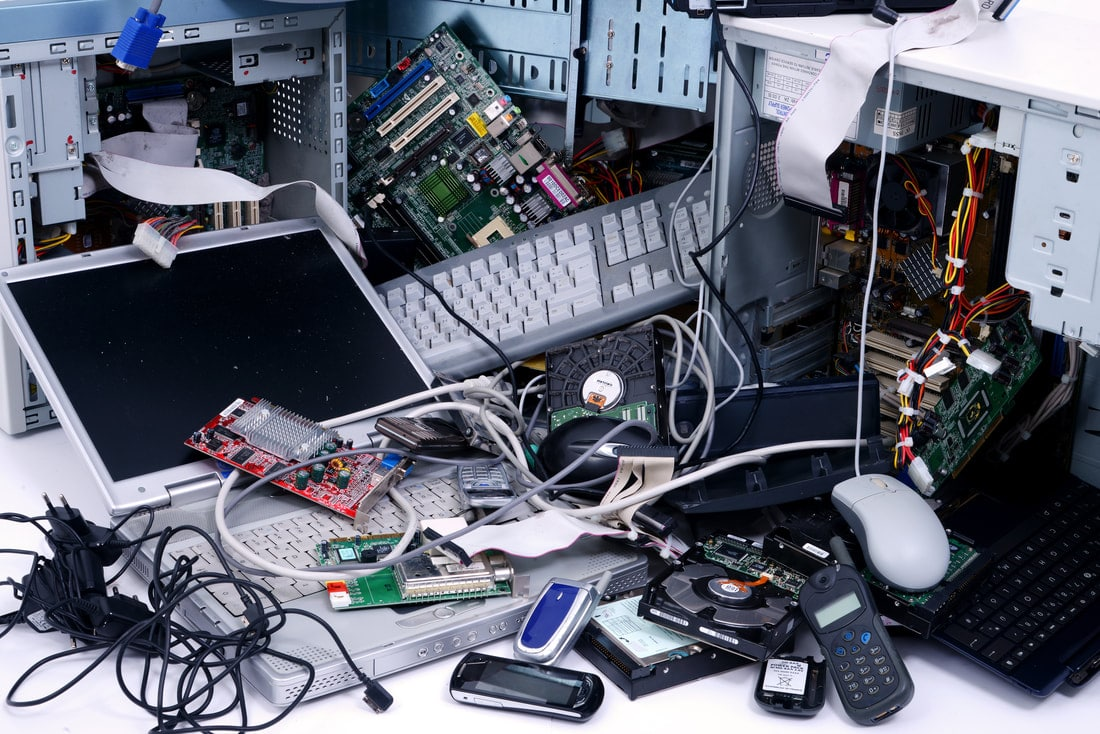
It’s a question that everyone who recycles electronics has asked themselves at one point or another: what happens to my e-waste after it’s been recycled? It might seem like the items disappear, but in reality, there is a lot of work happening behind the scenes. In this blog post, we’ll discuss what happens to your electronic waste and how you can help save the environment by recycling.
First, Data is Dealt With
Before recycling can begin, data storage and privacy must be addressed. While some part of this work should be done by businesses, the recycling center will ensure that nothing can be extracted from the drive. They will delete data correctly, restore factory settings, and remove storage devices properly. Even a blank storage drive will be scanned with the proper equipment to ensure that nothing is amiss.
Delicate data is involved.
Fortunately, expert recycling businesses also provide plans to handle data drives before the complete recycling procedure begins. Drives are shredded entirely using powerful equipment, and the fragments are recycled separately so that data cannot be extracted. Shredding services may also provide business accreditation for organizations that need to keep records confirming that the data was destroyed properly.
The Re-Use Phase
This process isn’t always essential, but it’s a frequent stage for manufacturers who offer buy-back programs like Dell or Apple. The company determines whether a product can be refurbished and resold in this phase. If a computer model is still relatively new and in good working order, refurbishing it rather than destroying it is preferable. Many businesses also have trade-in programs where you can exchange a large number of electronic gadgets at once.
The Hands-On Phase
This isn’t always necessary, but it’s quite typical when recycling larger devices. The device may have come with accessories or parts that can be readily broken down before disassembly. These components might be resold or salvaged, and circuit boards might require a different recycling process than the rest of the device (like as cited data drives). This is also when components will be deconstructed if needed.
The Breakdown Phase
After this, the device will be treated in a factory with sophisticated equipment that deconstructs it down into tiny components. The objective is to get the machine down to gravel-like consistency, so we’re talking extremely small pieces here.
The Separation Phase
Once the device is reduced to tiny pieces, they are analyzed and divided. The goal here is to remove any parts that may be recycled while maintaining the rest of it. This means removing all of the metal components and leaving just the plastic. There are various methods for accomplishing this, but attempting to sort by hand isn’t very effective. To separate all of the metal bits away, factories use an assembly line and powerful magnets.
Once extracted, the metal may be sent to other facilities to be melted down, purified, and turned into ingots or used in other products. The plastic is generally not recyclable and is instead disposed of in a landfill or similar environment. But luckily, many contemporary devices have removed as many plastic components as feasible and replaced them with aluminum alloy frames and other recyclable metals, thus meeting the needs of organizations with an internal sustainability goal. It may be a good idea to concentrate on these largely metal devices in the future. You can always inquire about a manufacturer’s recycling procedures if you have any more questions regarding this issue.
The Glass Phase
Glass components for displays and other display panels are found in a variety of devices. These glass components are removed and recycled with a water separation technique. Since glass is heavier than plastic, sifting them through water is an efficient method of separating the glass from the rest of the recyclables.
Handling Precious Metals
You may be wondering, “What happens to metals that aren’t as easily attracted by a magnet, such as gold, platinum, palladium?” Most devices are full of precious metals that must be recovered, and it’s not always simple to do so on an assembly line; sometimes, certain parts, like copper components, might be hand-stripped.
This is primarily done in the initial phase. When sorting through these products, circuit boards and any other peripherals containing precious metals are taken out. Because these components are so valuable, they are generally handled separately. They may be taken out earlier, or factories may have developed sophisticated separation methods to break down circuit board fragments afterward. The best approach to get precious metals is with specialized procedures using solid chemical reagents. To minimize the risk of contamination, it’s suggested that professionals perform this in a controlled environment.
This is a typical procedure for expert, professional recycling companies. Unfortunately, not all e-waste is recycled in this way. For many years, electronic waste has been exported to developing countries for dangerous, unchecked recycling processes that pollute the environment and local people. When choosing an e-waste recycling service, make sure they’re a licensed, experienced business that won’t be shipping your junk off without good cause.
